“The racial polarization is really growing here,” Paul Jay was remarking as we purred through the streets of Baltimore in his car one night, fruitlessly looking for a restaurant that might still be open. Jay is a former Canadian documentary filmmaker who now runs The Real News Network, a scrappy alternative on-line television network that’s headquartered in Baltimore. As we sharked through its vacant streets, Baltimore resembled any other mid-sized American city.
I was visiting Maryland, staying in a regal greystone pile of a hotel in Mount Vernon, one of Baltimore’s oldest neighbourhoods in the downtown core – originally home to its wealthiest denizens. It’s a quarter stiff with colonial-style buildings, art galleries, cafés and bars, all anchored by the Washington Monument.
But the Bohemian veneer and gentrification can’t paint over the fact the downtown looked shabby too, with visible signs of decay and poverty, or that Baltimore has a long and troubled history of race relations (64 per cent of its citizens are African American), helping explain what happened after Freddie Gray Jr., a 25-year-old, died in police custody last year. Gray’s suspicious death sparked riots, with 250 people arrested, 20 police officers injured, 285 to 350 businesses damaged, 150 vehicles and 60 buildings set on fire, and thousands of police and the Maryland National Guard deployed. A state of emergency was even declared within the city’s limits.
Fraying empire
Today, the death of Gray (which led to six police officers being charged with manslaughter) has long since been overtaken by fast–moving events in the United States, sparked by spasms of mass slayings and other violence, growing racial unrest with the killings of African Americans at the hands of police, demonstrations and riots, and attendant political chaos – all unfolding in the background of the race for the White House, which has descended into farce. The latest twist has been the shooting of police officers. Indeed, a CBC producer friend of mine, an African-Canadian woman, was sent to Dallas to cover the shooting deaths of five police officers in early July and told me that “the racial tension here – you can cut with a knife.”
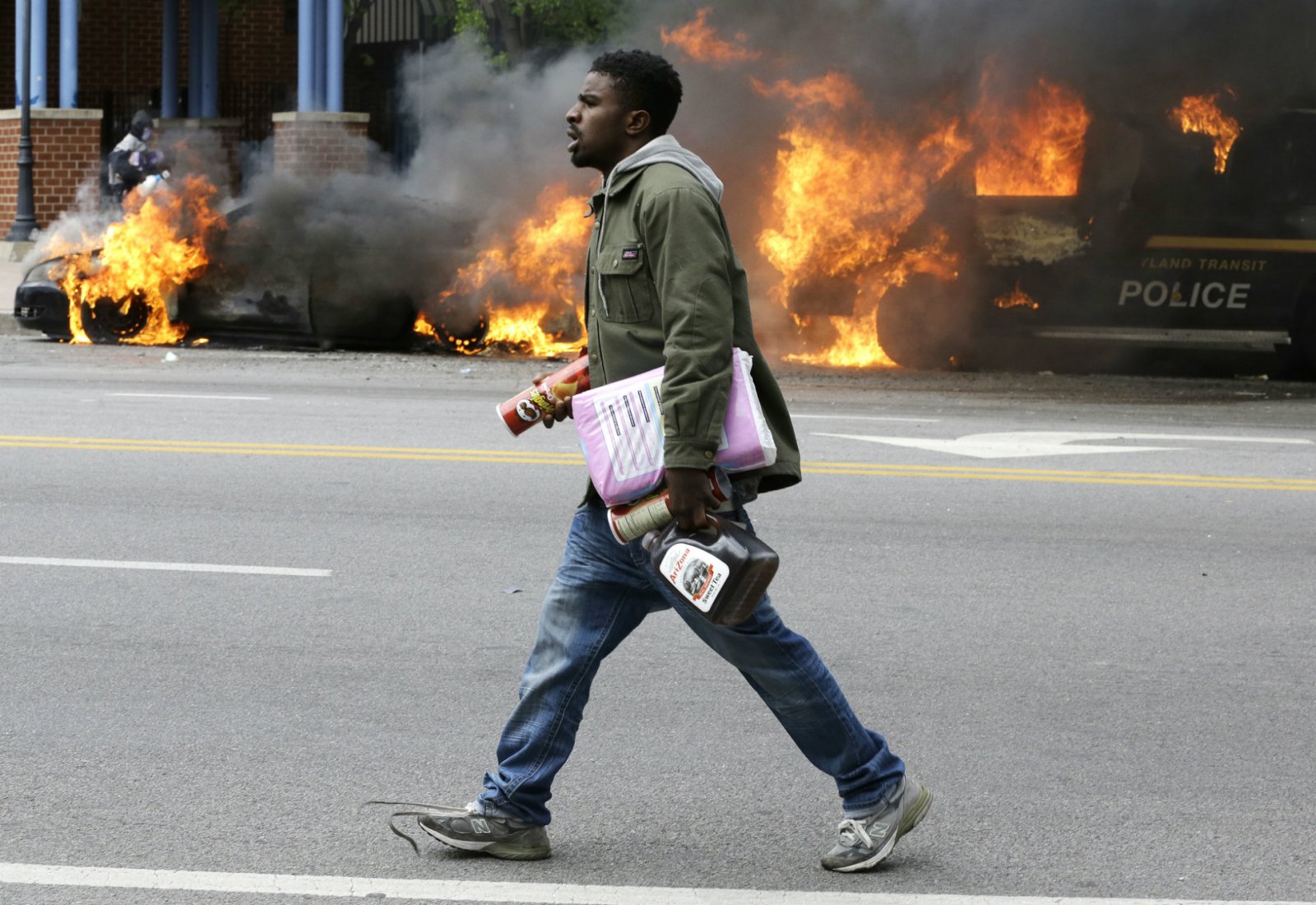
But what does it all signify?
Some believe these are portents of a declining and fraying American empire. “It’s reaching a crisis point,” insists Chris Hedges, the Pulitzer prize-winning former New York Times foreign correspondent, author and broadcaster, who believes the US finds itself at an interregnum – a period where the ideas that buttress the old ruling elite no longer hold sway, but an alternative vision hasn’t articulated itself. “And that is evident when you drive through city after the city, all of which have been de-industrialized. Half the country lives in poverty, may be more. All of the policies that are being implemented we’ve seen, which go after Medicare and Social Security, are carried out in the name of austerity. Unemployment figures are utterly fictitious. Real unemployment is probably far above 10 per cent.”
In turn, these very conditions have given rise to economic populism, personified by Bernie Sanders and Donald Trump.
This week, Trump was formally crowned as the presidential candidate for the Republican Party, a position he won by deriding the political and economic establishments for caring not a whit about average Americans, and by mocking and showing no fealty to his own party’s nomenklatura.
Last month, in a speech he gave in Monessen, Pennsylvania, Trump hit these notes, saying: “The legacy of Pennsylvania steelworkers lives in the bridges, railways and skyscrapers that make up our great American landscape. But our workers' loyalty was repaid with betrayal. Our politicians have aggressively pursued a policy of globalization – moving our jobs, our wealth and our factories to Mexico and overseas. Globalization has made the financial elite who donate to politicians very wealthy. But it has left millions of our workers with nothing but poverty and heartache. When subsidized foreign steel is dumped into our markets, threatening our factories, the politicians do nothing. For years, they watched on the sidelines as our jobs vanished and our communities were plunged into depression-level unemployment.”
Trump and the white male working class
Trump’s message is particularly appealing to the white male working class – a demographic that’s watched its position and prospects decline since the 1970s. “People point to racism and xenophobia and that’s all true, no doubt about it, (Trump) clearly appeals to that,” says Dean Baker, an American economist at the Center for Economic and Policy Research in Washington, DC. “But that’s always been there. So it’s not like we have looked at white working-class people and they have all just became racists in the last year… What’s new is here is a guy who is pretty openly saying this stuff and people are willing to vote for him. And I think that’s because they go ‘This system is not working for me.’ So yes, I think economics is a big part of the story.”
And it’s in cities like Baltimore where the economic decline is most apparent. In its heyday, it was a prosperous middle and working class metropolis, with one of the largest and busiest ports on the east coast. Flooded with European immigrants in the early 20th century, Baltimore soon became a diverse mosaic of cultures, with new arrivals settling in ethnic neighborhoods that reflected old world customs.
In the 1950s, Baltimore was home to a host of thriving industries—particularly manufacturing and shipping—which created some three-fourths of all jobs. The city's residents had a median income 7 per cent higher than the national median; the percentage of Baltimore families earning middle-class wages was about one-fifth higher than in the U.S. as a whole; and the proportion of Baltimoreans living in poverty was roughly one-fifth lower than the corresponding national figure.
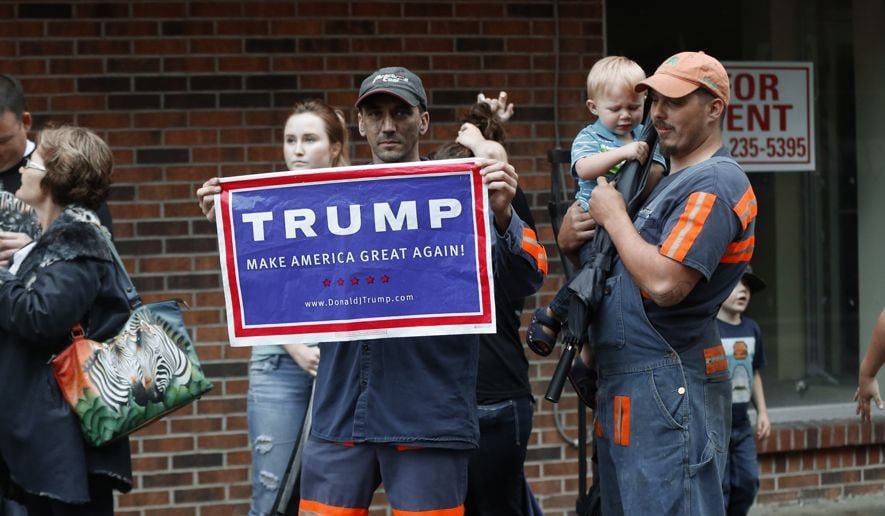
But then the city began to de-industrialize. From 1970 to 2000, Baltimore’s population fell by nearly one-third, from 906,000 to 651,000. Now it’s down to 620,000, and has the highest concentration of heroin addicts in the nation, many neighborhoods where households earn less than (US) $25,000 a year, with more than one in five adults out of work. It had 344 homicides last year – the highest per capita in its history (In comparison, with a population of 2.6 million, Toronto had only 55 homicides last year).
But is the fall of Baltimore really symptomatic of an American empire in trouble? After all, cities rise and fall – and plenty of American cities are flourishing, especially in places like Texas and California’s Silicon Valley. And if the American empire is in decline, is Trump evidence of its descent? “The United States is definitely in decline,” says Stephen Zunes, a professor of politics and international studies at the University of San Francisco. “There’s enormous discontent (with the ruling elites). You can see the inequality, even see the insecurity. This is the first generation of Americans that will not do better than their parents economically. Every generation we have been able to say that. But this generation is different.”
Now some wonder if the United States is at that critical point the Roman Empire once found itself – where the rot has set in and the future is looking bleak. “It’s more like the Roman Empire where you overextend your capacity to maintain the empire, you surrender your economic system to speculators, you need to base your political system in a form of political theater, which is how you end up with Nero and Caligula,” says Hedges. “And the citizens are kind of bought off with bread and circuses… which is sort of the entertainment complex in the United States, which is vast and huge and a very effective political pacifier… People essentially retreat into a kind of form of magical thinking…That’s what we are kind of seeing with Trump: the idea that he can bring back that prosperity that the white working class had in the 1950s and the early part of the 60s. It’s a non-reality belief system. But it’s what people desperately want to hear.”
Still number one
In one respect, it’s an absurdity to contend the US is a dying empire. After all, it clearly remains the world’s only true superpower, with no one challenging its preeminence in this regard.
Moreover, the country’s GDP is around (US) $18-trillion, which is larger than the entire GDP of the EU (at US$16.2-trillion) and dwarfs China’s, which is nearly (US) $11-trillion (although by other measures, China has surpassed the US as an economic power).
The US is by far the greatest military power too, with 900 military bases around the world, and a total defence budget of nearly (US) $600-billion per annum – which is larger than the combined military spending of China, Saudi Arabia, Russia, UK, India, France and Japan.
Moreover, while other economies are teetering or in full-blown crises – especially the EU, China, Japan, Russia and Brazil – the US economy is creating jobs and attracting enormous investment. “America is still a leader in high-tech stuff, some of it’s in the military, but it’s beyond that – Silicon Valley and in biotechnology,” observes Sam Gindin, adjunct professor of political science at York University and co-author of the groundbreaking 2014 book, The Making of Global Capitalism: The Political Economy of American Empire. “It’s the leader in new technology even if it’s lost a lot of manufacturing stuff… The US is a major leader… in business services, accounting, legal, consulting, engineering and, of course, finance, where it’s still dominant. Given the general malaise everywhere else, the US still looks relatively good.”
Gindin also points out no other country really wants to be the world’s policeman. And unlike the Cold War era that extended from the end of the Second World War to the 1990s – when one third of the world’s population was in the so-called communist camp – capitalism now rules the globe unchallenged, as does its neo-liberal ideology. “Now everybody’s inside capitalism and nobody’s talking about leaving global capitalism,” says Gindin.
Furthermore, the American empire does not need to occupy other countries or create colonies. “So it’s not empire that can just dictate,” explains Gindin. “The kind of empire that the US is is different than past empires. It’s not an empire where you have a territorial empire, like the Brits in India. It’s a unique kind of empire that says you are all going to have your sovereign state, you’re going to be able to do what you want as long as you don’t want to leave capitalism… and instead of sending in the army generally – and there are going to be exceptions because you still have to police this thing – you’ll try to make things work through markets; financial markets, trade. So it’s a more complicated empire that has to be judged in terms of is it achieving that. And I think it’s still achieving that.”
Indeed, global corporations, banks and brokerages are making staggering profits and, due to free trade agreements, able to move capital to wherever they please. US nonfinancial corporations have nearly (US) $16-trillion in financial assets on their balance sheets, almost as much as they have in tangible assets.
In contrast, the anti-capitalist forces have remained largely impotent, despite the credit crisis and flash-in-the-pan efforts like Occupy Wall Street. “We have to appreciate that the left has been incredibly enfeebled over the last few decades,” says Gindin. “The labour movement just doesn’t know what it’s doing – it doesn’t even frame the problem.”
So why is capitalism and its proponents not taking a victory lap? And why in the European Union are nativist, xenophobic and racist forces on the rise, as most visibly manifested with the Brexit vote? And why is the far right and far left in ascendancy in so many countries?
Economic fragility
In fact, the American empire developed a fatal flaw, which is sowing growing discord.
The beating heart of any empire is its economic might. And by the end of the Second World War, America was a powerhouse, producing half the world’s GDP. It was the globe’s workshop when it came to manufacturing cars, steel and consumer products. All of this created a burgeoning middle class with a rising standard of living, greatly driven by powerful trade unions that had organized during the Depression.
In turn, this wealth helped finance what Dwight Eisenhower called in his last speech as president, a “permanent armaments industry of vast proportions” which he labeled the “military industrial complex”.
With Europe and Japan devastated as a result of the war, American power was unchecked. Even the Soviet Union posed little real threat. The CIA and Marines freely engineered regime changes in countries across the globe that opposed US interests, in places like Iran, Guatemala, Chile, Dominican Republic, Brazil, Syria, Indonesia, Congo and Vietnam.
But by the 1970s, with the humiliating loss of the lengthy and brutal wars in Southeast Asia, the capacity of the US to invade countries or topple governments had waned. And the more recent wars in Iraq and Afghanistan in the past 15 years have shown this remains even more true today. “The CIA can’t just come in and overthrow a government the way they used to,” says Zunes. “They can’t send in the American Marines and hope things work out the way we want them to. We can’t just put crippling sanctions on the country and then they will bend to our will.”
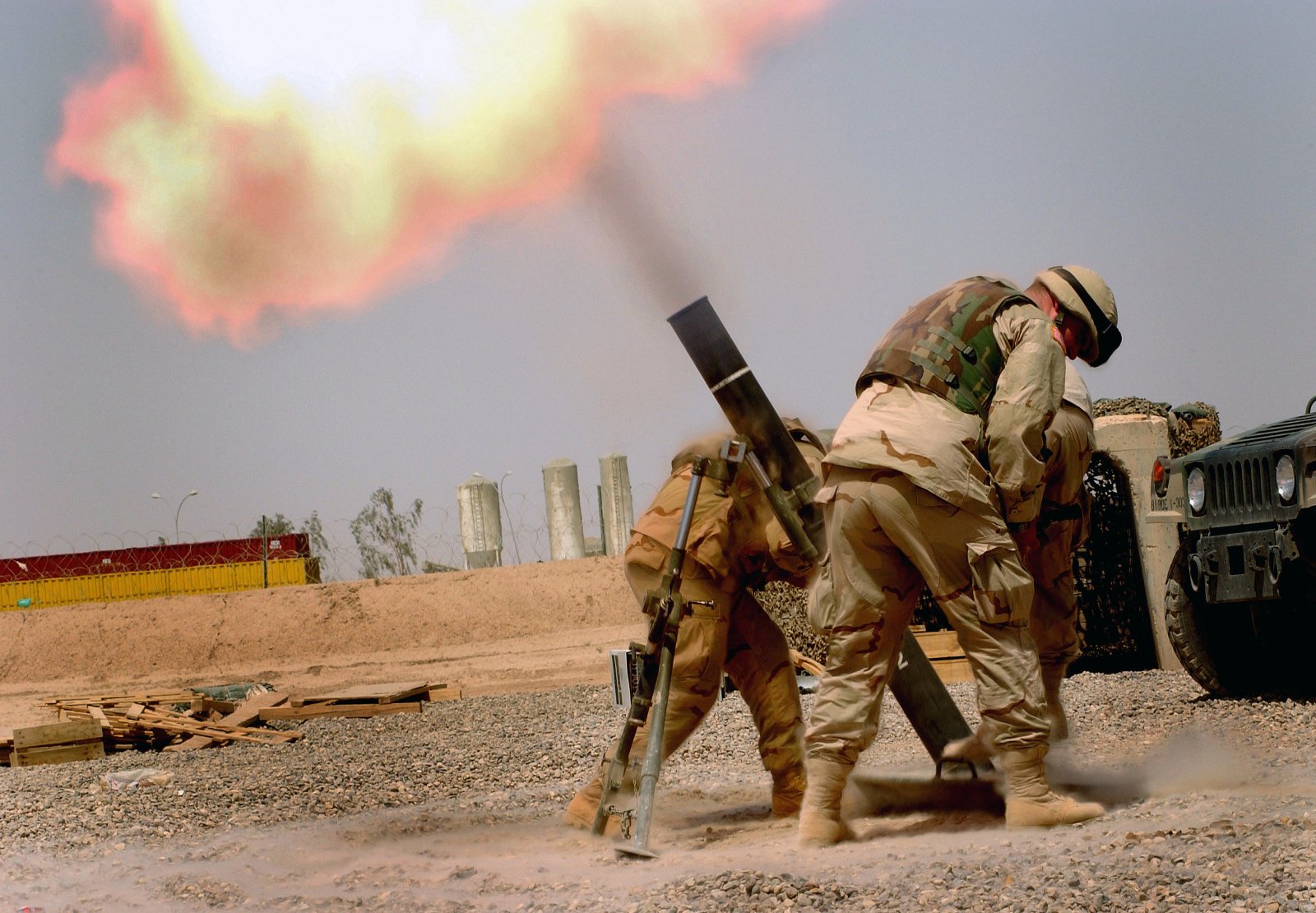
On the domestic front, things were bad too: stagflation and soaring gas prices during the ‘70s saw the great post-war boom easing to an end.
This economic crisis led to two important developments that ended up creating the empire’s fatal flaw: pressured by the business community, governments introduced free trade agreements that gave corporations and finance capital greater freedom to move factories and investment wherever labour was cheaper and civil society and environmental laws were weakest. And domestically, trade unions – which had fought for better wages during the post-war boom – came under withering assault.
The result of globalization and attack on labour rights was wages in the US and Canada (and in Europe too) stagnated – and have done so for more than 40 years. Unionization in the US has fallen from 35 per cent of all workers in 1954, down to 11.3 per cent today – and only 6.6 per cent in the private sector.
Consequently, the capacity of workers and the middle class to garner a bigger portion of the economic pie began to fall. Says Baker: “We decided to put American workers in competition with workers in China and in India and, of course, the effect was to lower their wages.”
The evidence of this is no longer a matter of debate: For instance, in a recent survey, the US Federal Reserve Board asked respondents how they would pay for a $400 emergency. The answer was shocking: 47 per cent said that either they would cover the expense by borrowing or selling something, or they would not be able to come up with the money at all.
Two reports published last year by the Pew Charitable Trusts found that 55 per cent of households didn’t have enough liquid savings to replace a month’s worth of lost income, with 71 per cent were concerned about having enough money to cover everyday expenses. A similar study conducted by Annamaria Lusardi of George Washington University, Peter Tufano of Oxford, and Daniel Schneider, then of Princeton, came to the conclusion that nearly half of American adults are “financially fragile” and “living very close to the financial edge.”
Indeed, in the US, median net worth has declined steeply in the past generation – down 85.3 per cent from 1983 to 2013 for the bottom income quintile alone. According to research funded by the Russell Sage Foundation, the inflation-adjusted net worth of the typical household was $87,992 in 2003. By 2013, it had fallen to $54,500 - a drop of 38 per cent.
Consequently, this pauperization has meant the share of American adults living in middle-income households has fallen from 61 per cent in 1971 to 50 per cent in 2015, while the share living in the upper-income tier rose from 14 to 21 per cent over the same period. At the same time, the portion of the population in the lowest-income tier increased from 25 to 29 per cent.
Instead, wealth has been flowing upwards. Fully 49 per cent of US aggregate income went to upper-income households in 2014 – up from 29 per cent in 1970. The top 1 per cent of income earners received approximately 20 per cent of the pre-tax income in 2013, versus approximately 10 per cent from 1950 to 1980.
But the economy was also changing in regards to the nature of work. Manufacturing jobs – which used to provide a solid income – have almost disappeared in the US and Canada. Manufacturing employment as a percentage of the overall workforce has fallen in the US to about 10 per cent – down from almost 35 per cent at the end of the Second World War. Those jobs were outsourced to low-wage countries, or rendered obsolete by technology and robotics.
Yet the service industry jobs that filled the vacuum tend to pay far less, are non-unionized and less secure.
Today, the result is that American workers and middle class have become more desperate – and pissed off. “People are unhappy,” says Jodie Evans, an American human rights activist, former California cabinet minister, and co-founder of the women’s activist organization CodePink. “Do you know the highest cause of death for white women between the ages of 35 and 50 is drug overdose? It’s because there is a middle America that’s not feeling any hope anymore. And that doesn’t feel good. What happens when you leave people with no hope, it’s not pretty.”

Hence, that unhappy, angry blue color portion of the populace has been flocking to Trump. “The real thing that’s really driving the Trumpian thing is that there are so many demographic sectors in the country and so many regional sectors that are doing badly that the appeal of someone like Trump is so very dramatic,” says Doug Henwood, the editor of New York-based Left Business Observer, a liberal economics newsletter. “A lot of the Trump support comes from regions of the country where there’s a lot of poor white people and their areas are just in long long term decline. And they blame the Chinese and they blame the Mexicans for it, they blame anything but the structure of the American political economy…. Trump’s appeal excites them, it gives them a sense they can break out of this perpetual decline.”
Buying political power
But as wealth has concentrated among the wealthy, they have not been shy about using it to further their economic ends. Now there is growing concern America is turning into an oligarchy – and democracy is disappearing as a consequence. “There is no democracy, it’s bought and sold,” argues Evans.
In 2014, a study by Martin Gilens, a professor of politics at Princeton, and Benjamin I. Page, a professor of decision-making at Northwestern University, examined this question and concluded that it was true. “The central point that emerges from our research is that economic elites and organized groups representing business interests have substantial independent impacts on U.S. government policy, while mass-based interest groups and average citizens have little or no independent influence,” they said.
This political interference by the 1 per cent is best demonstrated by Charles and David Koch, who control the Wichita, KA-based oil (US) $115-billion oil conglomerate Koch Industries, and are the seventh wealthiest people in the US, with a combined worth of almost (US) $90-billion.
The Kochs use their wealth to influence and change the American political system, from helping finance the Tea Party movement, to bankrolling the Republican Party and financing a vast network of at least 17 different political organizations, including the Cato Institute, Americans for Prosperity and the Heritage Foundation.“We have never in all of our research uncovered a set of organizations that has funding as concentrated in a structure as complicated as the Koch network,” says Robert Maguire, an investigator with the Center for Responsive Politics, a Washington, DC-based non-partisan organization that tracks political spending.

The Kochs spend vast sums on influencing the outcome of elections and the legislative agendas of Congress and state legislatures: In 2012, for example, Koch-affiliated organizations spent (US) $404-million during the US election cycle. Two years later during the 2014 midterms, they spent (US) $290-million to help Republicans win control of the Senate. And last year, they and some of their billionaire friends planned to spent (US) $889-million on this year’s election cycle – or more than double what the Republican National Committee spent in 2012. “They have a vast political network that rivals the other parties,” says Kert Davies, a former head of research at Greenpeace USA who now runs the Climate Investigations Center in Washington, DC, and has investigated the Kochs’ political network. “They're bigger than the Republican Party and the Democratic Party in they're organizing might.”
Twice a year, the Kochs host conclaves of fellow plutocrats at upscale resorts in California and Colorado to discuss tactics and raise cash. Republican politicians make pilgrimages to these gatherings seeking support: This past January, at the Kochs’ conclave at Palm Springs, CA, senators Ted Cruz, Marco Rubio and Rand Paul and Wisconsin governor Scott Walker showed up.
And while the Kochs have not publicly backed Trump, their money will help Republicans try and maintain control of Congress and the Senate in November.
But it’s not just the Kochs who use their cash in this manner. Before he died in 2014, the billionaire Richard Mellon Scaife spent (US) $620-million over a 50-year period trying to influence the US political system in support of his far-right-wing causes. As does Sheldon Adelson , the chairman of the Las Vegas Sands Corp., worth (US) $28-billion and the 18th richest American who spent (US)$92-million on the 2012 presidential election cycle trying to get Mitt Romney into the White House.
Yet this effort by the elites to interfere in the political system has resulted in decisions on pressing issues, such as health care, gun control, climate change or political spending, not being resolved. And these festering issues and the incapacity of them to be fixed is fostering unrest and anger. “The rise of the national security state; the undermining of democratic elections… a breakdown in the rule of law,” remarks Marjorie Cohn, a professor emerita at Thomas Jefferson School of Law and former president of the National Lawyers Guild, when she’s asked about the indicia of the American empire’s decline. “The ‘war on terror,’ which George W. Bush launched and Barack Obama continues to prosecute in seven different countries, has provided an excuse to clamp down on civil liberties within the US…Police are increasingly militarized and whistleblowers are prosecuted like never before. Citizens United has led to more corruption in elections and there is increasing interference with the right to vote.”
Now Hedges argues that the American political system is no longer what it was. “It’s not like the old robber barons – because it’s a global oligarchy which has no loyalty to the nation state,” he says. “It’s a corporate oligarchy which is different from the old manufacturing oligarchy of Carnegie Mellon which had an interest in retaining power within the parameters of the nation state. Corporations today don’t care. They’re willing to strip the state, which is what they’re doing, because they have no loyalty to the nation state at all. That’s the difference.”
All safe for the one per cent
So while the American empire is looking sturdy and in no danger of collapsing anytime soon, it’s also generated an enormous divide between the haves and have-nots. For the 1 per cent, corporate sector, banks, hedge funds and brokerage houses, the empire is working just fine.
And the empire’s client states and allies, in places like Egypt, Israel, Turkey, Saudi Arabia and Mexico, are adept at clamping down on local uprisings when they flare up, maintaining control.
But at the same juncture the empire is beginning to rot from within. “The empire has been dying for quite awhile,” insists Evans. “Like in Rome it’s going to be ungovernable for the next 75 years.” And that’s because the domestic population is growing restless and angry with their increasingly desperate economic lot.
This anger and frustration at the grassroots propelled Trump to his current candidacy for president, who has focused the rage at minorities, women and Muslims.
Yet it’s unlikely to win him the White House. Instead, in November, Hillary Clinton will almost assuredly take over as president.
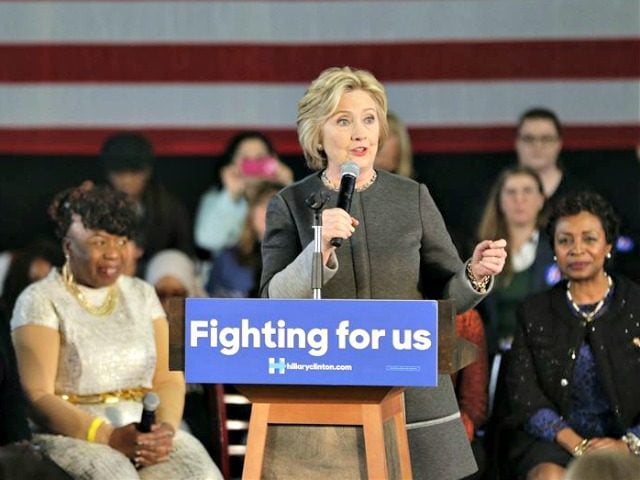
But what does that mean for the future of the American empire? After all, under Barack Obama, a Democrat and African-American, the problems of Americans only got worse. “She will be a good steward of the empire,” says Cohn. “She is more hawkish than Obama.”
In the end, Hedges believes Clinton will find it difficult to maintain the status quo. “(She) epitomizes everything that everybody rose up against on both sides of the political spectrum,” he remarks. “And it’s because of the paralysis of the corporate state, ie. the inability of the corporate state to respond rationally to the problems facing the citizenry that you vomit up a figure like Trump. But Trump is not the phenomena; Trump responds to the phenomena. So you put Clinton in power and you know you may get rid of Trump as a particular figure but you’re not going to get rid of that phenomena. You will certainly see another Trump-like demagogue rise up as this legitimate anger ripples through society. I don’t think either Trump or Clinton have any interest or any capacity to fundamentally alter the system.”
Excellent journalism! The
Excellent journalism! The best overview of the failure of the US to solve the problem of the growing anger of the working class American. This is the precursor to drastic change. Their world has changed for the worse and they are lashing out at anything they perceive as a cause. "Trump is not the phenomenon, he is the result of the phenomenon". Yes!
This supports my personal opinion that the US has a long hard road ahead if it hopes to survive to build a new political system that will work for all Americans in a very different world economy.

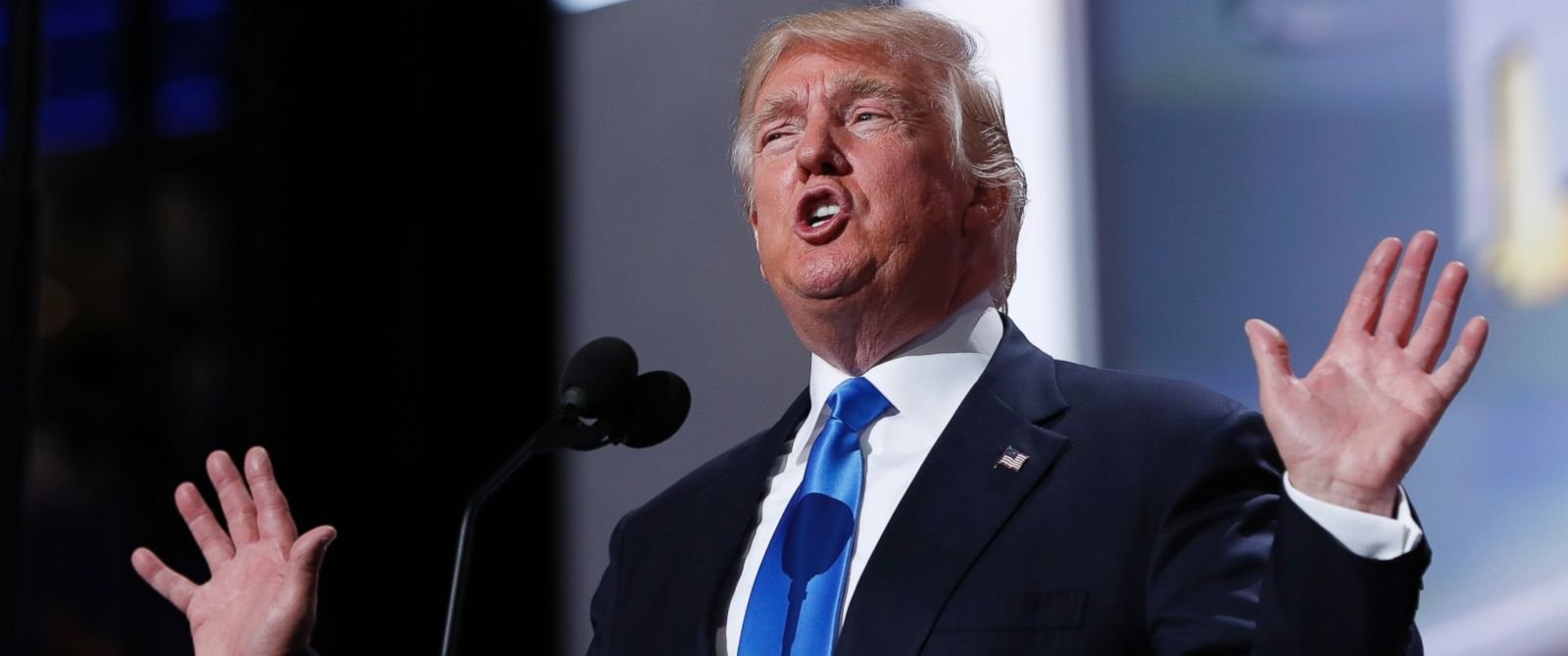

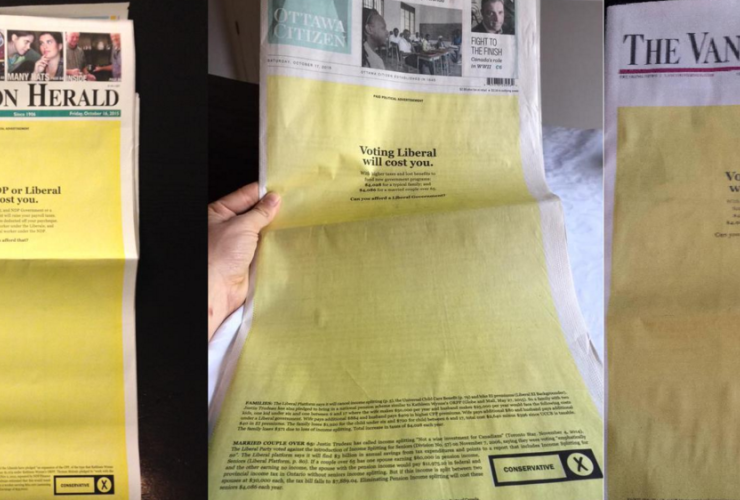



Comments